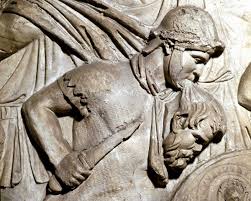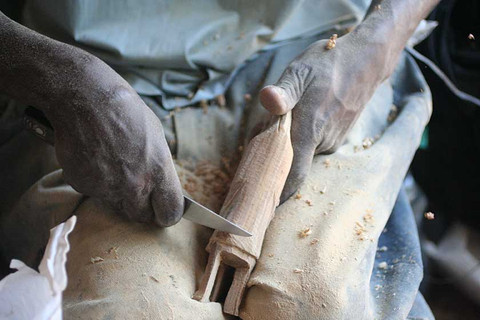Stamp: Admonter Pieta (1410) mural relief, Steiermark (Austria 1978)
Admonter Pieta (1410) mural relief, Steiermark (Austria 1978)
26 May (Austria ) within release Gothic in Austria goes into circulation Stamp Admonter Pieta (1410) mural relief, Steiermark face value 2.50 Austrian schilling
| Stamp Admonter Pieta (1410) mural relief, Steiermark in catalogues | |
|---|---|
| Michel: | Mi:AT 1575 |
| Yvert et Tellier: | Yt:AT 1404 |
Stamp is vertical format.
Stamp Admonter Pieta (1410) mural relief, Steiermark it reflects the thematic directions:
An exposition, in the most general sense, is an organized presentation and display of a selection of items. In practice, exhibitions usually occur within museums, galleries and exhibition halls, and World's fairs. Exhibitions can include many things such as art in both major museums and smaller galleries, interpretive exhibitions, natural history museums and history museums, and also varieties such as more commercially focused exhibitions and trade fairs.
Art is a diverse range of human activities in creating visual, auditory or performing artifacts (artworks), expressing the author's imaginative or technical skill, intended to be appreciated for their beauty or emotional power. In their most general form these activities include the production of works of art, the criticism of art, the study of the history of art, and the aesthetic dissemination of art. The oldest documented forms of art are visual arts, which include creation of images or objects in fields including painting, sculpture, printmaking, photography, and other visual media. Architecture is often included as one of the visual arts; however, like the decorative arts, or advertising, it involves the creation of objects where the practical considerations of use are essential—in a way that they usually are not in a painting, for example. Music, theatre, film, dance, and other performing arts, as well as literature and other media such as interactive media, are included in a broader definition of art or the arts. Until the 17th century, art referred to any skill or mastery and was not differentiated from crafts or sciences. In modern usage after the 17th century, where aesthetic considerations are paramount, the fine arts are separated and distinguished from acquired skills in general, such as the decorative or applied arts.
The Goths (Gothic: 𐌲𐌿𐍄𐌸𐌹𐌿𐌳𐌰, romanized: Gutþiuda; Latin: Gothi, Greek: Γότθοι, translit. Gótthoi) were Germanic people who played a major role in the fall of the Western Roman Empire and the emergence of medieval Europe
Stone carving is an activity where pieces of rough natural stone are shaped by the controlled removal of stone. Owing to the permanence of the material, stone work has survived which was created during our prehistory or past time.




